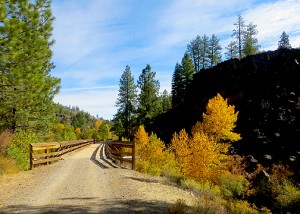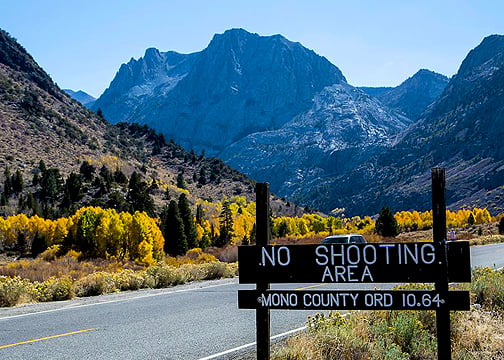Indian Summer at Hot Springs Mountain

Indian Summer, Hot Springs Mountain (10/25/14) Scott Turner
Modern Hiker’s Scott Turner traveled out to Hot Springs Mountain in eastern San Diego County, yesterday to provide these images of the color change there and to inspire this article on Indian Summer.

Black Oak, Hot Springs Mountain (10/25/14) Scott Turner

Black Oak, Hot Springs Mountain (10/25/14) Scott Turner
Hot Springs Mountain is located on an Indian rancheria in eastern San Diego County. It’s a beautiful place, though remote, not very accessible and therefore not the kind of location most color spotters would venture.
That’s one reason we like Scott’s report so much. He repoted that black oaks are a lot further along than he thought they’d be. There’s a large mixed forest of oaks and pine on Hot Springs Mountain that are near peak.
Continuing to the Laguna Mountains, he found the higher elevations as patchy. Palomar Mountain and Julian are also patchy. Scott plans to visit them again next Friday and promises another report with photos.
Scott’s photographs of the hazy air hanging over Hot Springs Mountain on an Indian reservation made me wonder how Indian summer got its name. The answer may not be what you think it is.
What appears to be a well-researched report in The Mountain Eagle![]() says the condition of dry, hazy weather in October and early November dates back to the 18th century in the United States.
says the condition of dry, hazy weather in October and early November dates back to the 18th century in the United States.
Some believe the term evolved from the fact that native Americans would hunt then, as it was Indians practice to burn off underbrush for easier collection of acorns, a vital source of nourishment, accentuating the hazy and smoky atmosphere. The open forest also made it easier to hunt animals.
The Mountain Eagle said there’s an entirely different explanation, that has nothing to do with native Americans. During the 1800s, clipper ships were able to carry the heaviest when crossing the Indian Ocean during “Indian Summer,” as it was the fairest season of the year. To maximize what they could carry in their holds, the sailing ships would even mark “I.S.” on their hulls as the maximum load level thought safe to sail the Indian Ocean during Indian Summer.
Whatever the origin of the term, it is a pleasant time of year spent, most pleasantly, outdoors enjoying fall color.
























